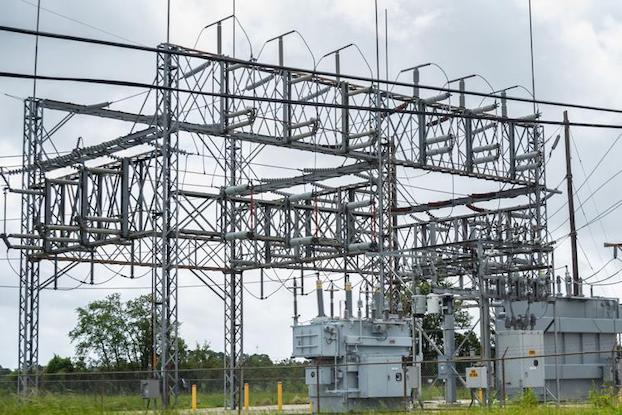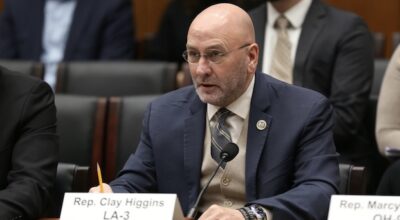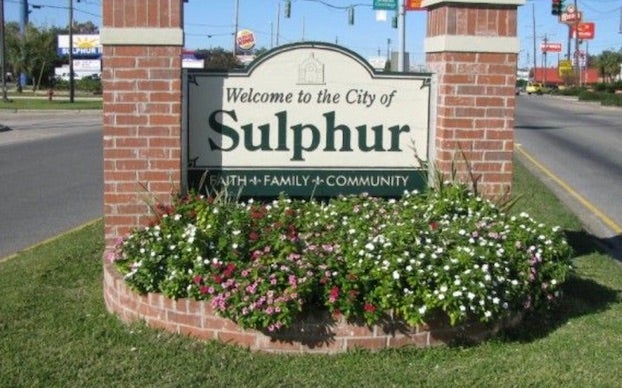Acadiana Profile names Lake Charles city of year
Published 8:10 am Sunday, February 17, 2013
Editor’s Note: The following article appears in the February-March issue of Acadiana Profile. Claverie, a travel writer, visited Southwest Louisiana in October.
What does it take to make a good city great? This is the question Lake Charles city leaders asked in the early 2000s. Today, less than a decade after government, business and nonprofit leaders embarked on an ambitious program, the town and its surrounding parishes are welcoming a whopping $42 billion in new industry over the next few years.
It is because of this staggering growth, while retaining a good quality of life, that Acadiana Profile magazine names Lake Charles its City of the Year.
“Lake Charles and its 72,000 residents make up the urban center of a five-parish area called Southwest Louisiana,” says Randy Roach, mayor of Lake Charles for the past 12 years. “We can’t do anything without a coordinated effort of all five parishes. We’re like a family. We may have disagreements, but we work together behind closed doors and come out with a unified voice.”
Anyone who lives in Lake Charles – or who has spent any time there recently – knows one thing for sure: This city and its surrounding parishes’ explosive economic growth didn’t happen by accident.
“I don’t think there is a city of our size in America that can claim this type of success,” says David Conner of the Southwest Louisiana Economic Development Alliance. In the next few years, the Lake Charles area will welcome nearly 6,000 new jobs, more than 18,000 construction jobs and nearly 8,000 indirect jobs, including:
• SASOL Ltd.: Its gas-to-liquid facility, a $10.5 billion investment, will add 850 new jobs and 4,000 indirect jobs, with an average salary of $89,000. More than 5,500 construction jobs will take part in building the facility. SASOL’s Ethylene Cracker/Derivatives Complex will be a $4.5 billion capital investment and add 400 to 500 new jobs. The company’s Ethylene Tetramerization Unit will add another 36 jobs to its existing 350 and require a capital investment of $175 million.
• Cheniere Energy in Cameron Parish will add 148 new jobs to its existing 77 and make an $11 billion capital investment.
• Sempra/Cameron LNG will add 130 new jobs to its 60 existing and 610 indirect jobs with average salaries of $80,000 per year. Its capital investment is $6 billion.
• Leucadia National Corp. LC Cogeneration will add 200 new jobs to the area and make a $2.6 billion investment.
• Energy Transfer Equity/Trunkline LNG will add 100 new jobs for its $5.7 billion investment.
A booming tourism business is the second economic driver, just after the petrochemical industry, and brings in $339 million annually. Four area casinos draw gaming tourists and those who wish to enjoy the top-flight entertainment and restaurants. L’Auberge du Lac Casino Resort boasts a 70,000-square-foot casino, more than 1,000 rooms (with extraordinary private villas for the highest rollers), six restaurants and two pools. Top entertainers such as Harry Connick Jr., Tony Bennett and Dionne Warwick headline performances. Delta Downs Racetrack, Casino and Hotel in Vinton appeals to the horsey set, and the Isle of Capri Casino attracts even more gamers.
Ameristar Casino Resort Spa broke ground in July 2012 on its $500 million casino resort. The resort will include a luxury hotel with 700 rooms, 1,600 slot machines, 60 table games, an 18-hole golf course and other top-flight amenities.
Most of this boom was planned for prior to 2005, when Lake Charles’ economy was anchored by the petrochemical industry and bolstered by the Port of Lake Charles. The downtown area was an underused expanse that failed to attract business or residents. Tourism was beginning to come of age. With the catastrophic losses from Hurricane Rita, the city felt a sense of urgency. “Call it the ‘blessing of adversity’ if you want,” says Mayor Roach, “but the lesson learned for Lake Charles was that we couldn’t control what happened to the area, but we could control what we did with it.” City leaders and residents became galvanized to rebuild the city, better than ever.
The pivotal moment came when nationally known and respected community planner Andrés Duany arrived in Lake Charles after Hurricane Rita to manage and direct a series of meetings with city leaders and residents. With his guidance, residents developed a common vision of what the city could be and how it could be achieved. A parish-wide bond issue to accomplish the plan failed. Lake Charles residents later took matters into their own voting booths and approved a bond issue to support the citywide improvements. The hard work of rebuilding the city and making long-needed changes began.
Today, residents point to a revitalized downtown, where a 36-square-block area boasts new sidewalks along the lake, opening the area to walkers, joggers and yogis. Millennium Park, a 19,000-square-foot, $1.2 million children’s playground, opened last January. A large green space is now a festival area and hosts public concerts and fairs. A $5 million transit facility opened in December, and a new courthouse is under construction. The pedestrian-friendly space has state-of-the-art amenities, while welcoming charming horse-drawn carriages that transport visitors along the way.
Charpentier Historic District, adjacent to downtown, is now a chic 40-block area filled with Victorian homes, many on the National Register of Historic Places. The quirky Lake Charles custom of having an odd number of columns on the homes prevails.
“Redeveloping the downtown area gave the community a sense of place,” says Lori Marinovich, executive director of the Downtown Development Authority. “Before all these improvements were made, this was an underutilized space. Now, everyone identifies with it. It speaks to the overall quality of life in Lake Charles and instills city pride.”
A good quality of life and a world of business opportunities convinced businessman Rick Richard and his wife, Donna, to return home after living throughout the U.S. for 35 years. The two have spent the past seven years throwing themselves into real estate development and civic endeavors. They have restored some long-neglected and historically important buildings, such as the Calcasieu Marine National Bank and the Cash & Carry building, now both on the National Register of Historic Places and used for special events. The elegant Phoenix Building, the first new building downtown in decades, is another Richard project. The couple has immersed themselves in leadership roles with the Lake Charles Symphony, mentoring programs and other nonprofit endeavors.
“What really brought us back home to Lake Charles were the people,” Richard says. “We always enjoyed the state and saw a lot of good things happening in Lake Charles. In the 1970s, Lake Charles did some really stupid things, like tear down beautiful old department store buildings and theaters. Now the city sees the opportunities it has and is making the most of them. They’re bringing people back to the downtown area to live, shop, entertain. Downtown is now the ‘living room’ of the city. We wanted to be part of all this.”
Residents also cite a safe environment as a draw for businesses and families alike. The city’s crime rate is low, with six murders in 2011 and six for 2012 by December. The public school system is the fifth-largest in Louisiana, and although it is good, locals agree that it could use improvement. There are two new charter schools and a few private and parochial schools.
McNeese State University, with an enrollment of nearly 9,000, recently announced a meat-processing program that will enhance agriculture in this part of the state, thus helping diversify the economy even more. Today, the Port of Lake Charles is more robust than ever, the 14th-largest port in America.
One area of concern among some locals is the environmental impact of such a prominent petrochemical industry. Last year the Sierra Club filed a formal protest to the U.S. Department of Energy challenging the proposal to export billions of cubic feet of domestic natural gas from a facility in Cameron Parish. The Sierra Club’s protest challenges the natural gas companies’ efforts to secure liquefied natural gas without acknowledging its damaging effects. Likewise, the club’s Beyond Coal Team has protested the new coal-fired power plant being built and cites Leucadia’s petroleum coke synthetic gas plant in Lake Charles.
But most residents accept the petrochemical industry as part of life in Lake Charles. “I’ve lived here most of my life,” says a third-generation local, “and it is very apparent that the air and water quality is better than it was 40 years ago. The oil companies have very stringent regulations today, and I do think the environment is better than when I was a child.”
Longtime residents joke that “if you’re bored in Southwest Louisiana, it’s your own damn fault.” In the course of one calendar year, there are more than 75 festivals held in the Lake Charles area, ranging from the down-home Iowa (pronounced I-Oh-Way) Rabbit Festival, where festival-goers sample rabbit prepared myriad ways and dance in the street to Cajun music to the very sophisticated Rouge et Blanc Food and Wine Festival. Mardi Gras festivities boast more than 60 carnival krewes. The town’s Mardi Gras Museum claims to have the largest collection of Mardi Gras costumes in the world on display. The Lake Charles Symphony, now in its 55th season, presents four performances a year, attracting nationally known performers. The Lake Charles Civic Ballet is equally prominent. Community support for both is high. On a recent night when the ballet was almost a sell-out, B.B. King was performing at a concert, the Louisiana Swashbucklers (a professional indoor football team) had its opening game and the McNeese Banners Series was hosting an event. “That night was a true testament to the cultural diversity of Southwest Louisiana,” says Kelley Saucier of the city’s ballet. “Few preprofessional dance companies in the country could have accomplished what ours did.”
Lake Charles is also the youth sports capital of Louisiana, attracting a large number of tournaments throughout the year to the city’s state-of-the-art athletic facilities. The nearby aquatic center in Sulphur, a stone’s throw from Lake Charles, brings in state and regional swim meets. The area has seven golf courses, including the pristine Audubon Golf Trail course at Gray Plantation.
One intangible that helps attract visitors to this part of the state is its authentic culture. “We locals guard that closely,” says Megan Hartman, senior marketing manager of the Lake Charles/Southwest Louisiana Convention & Visitors Bureau. “We want the visitor to drive the 180-mile Creole Nature Trail and to see our four wildlife refuges and two migratory flyways for exotic birds or stop on the side of the road and go crabbing. Here, tourists can see how people and nature can live together peacefully.”
After a day with nature, a visitor can visit any of the stops along the Southwest Louisiana Boudin Trail — located in upscale restaurants, mom-and-pop shops and gas stations — to sample the local delicacy, boudin. The yummy sausage is traditionally bought by the pound and eaten for breakfast, lunch, dinner and any time in between. It’s a multi-million-dollar business for local outlets.
City leaders look forward to even more development. To ensure this, they have instituted mentoring programs with proven leaders such as Richard to work with young entrepreneurs. The Southwest Louisiana Economic Development office is working with other petrochemical businesses considering locating or expanding into the area, as well as other industries.
In late 2016, the National Hurricane Museum & Science Center, located on the city’s lakefront, will open and be dedicated to understanding hurricanes and wetlands, investigating their scientific and ecological impact. The $65 million project, a sweeping complex inspired by the Sydney Opera House, is expected to attract 220,000 visitors annually. It also embodies the spirit of Southwest Louisiana, an area that has been ravaged by hurricanes but continues to thrive despite Mother Nature’s wrath.
“In the next few years, Lake Charles will have several big industries locating here, with high-paying jobs,” says Jill Kidder, the museum’s project coordinator. “This museum is part of an overall community development plan aimed to keep the best and brightest here. We’re providing opportunities for our residents to stay in Lake Charles and raise their families in a city that cares about education, culture and quality of life.”
Businessman Richard agrees: “There’s no place on earth that is smarter than we are right now. I tell my Lake Charles friends to shoot for the moon because even if we miss it, we’ll hit a star. It’s all here: the talent, energy, work force, and vision. We just have to reach for the moon and go for it.”
(American Press Archives)
(American Press Archives)





